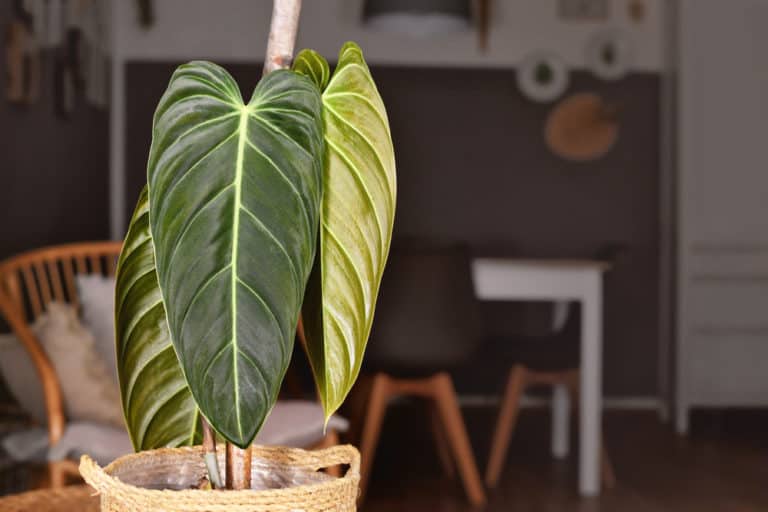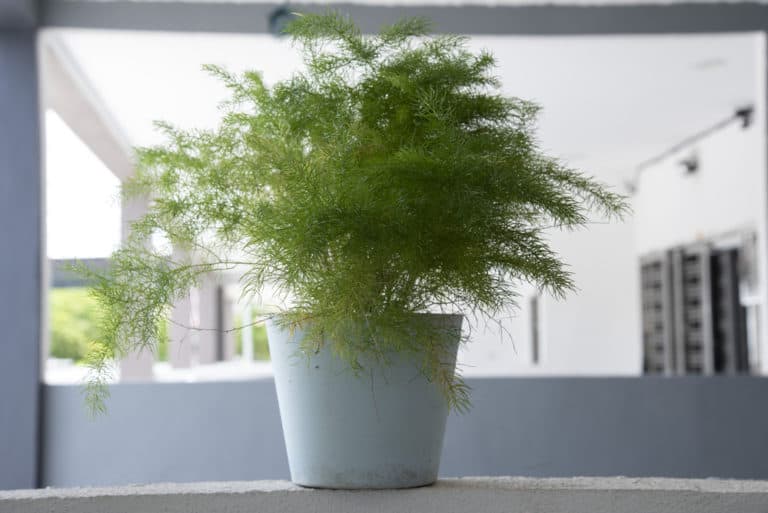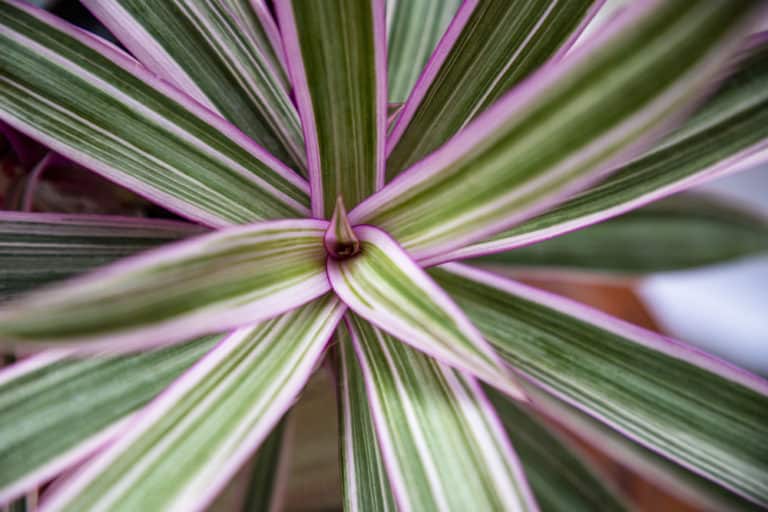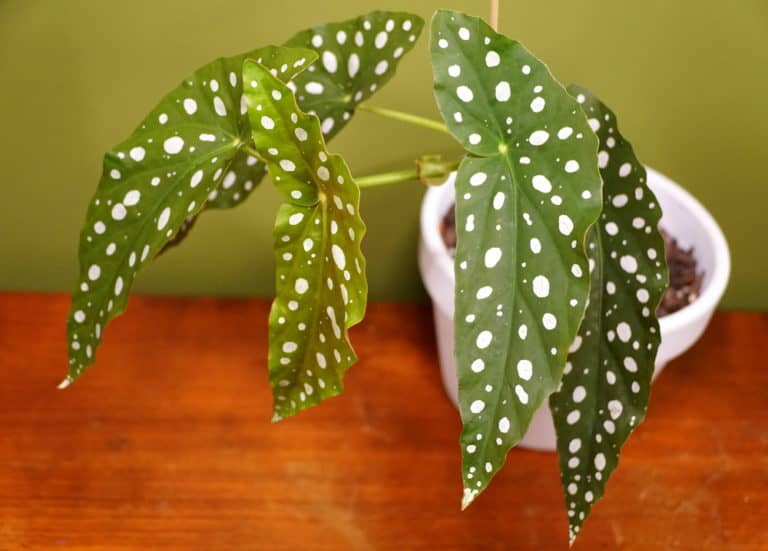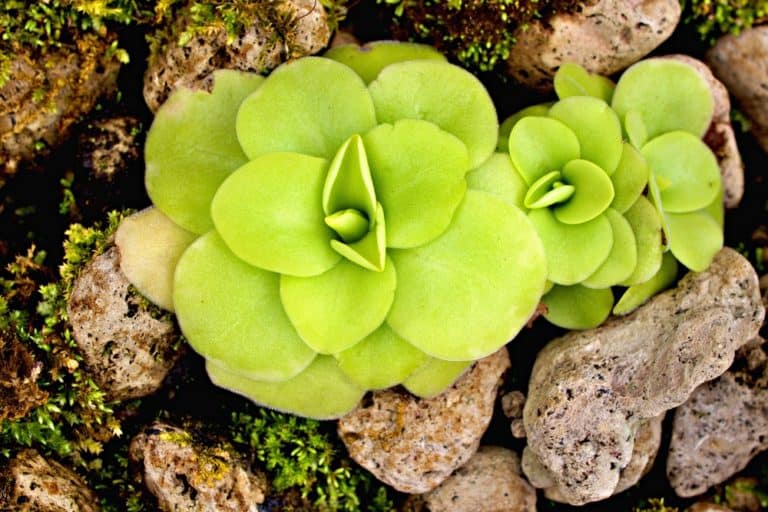Peperomia Caperata ‘Rosso’ Care Guide (2024)
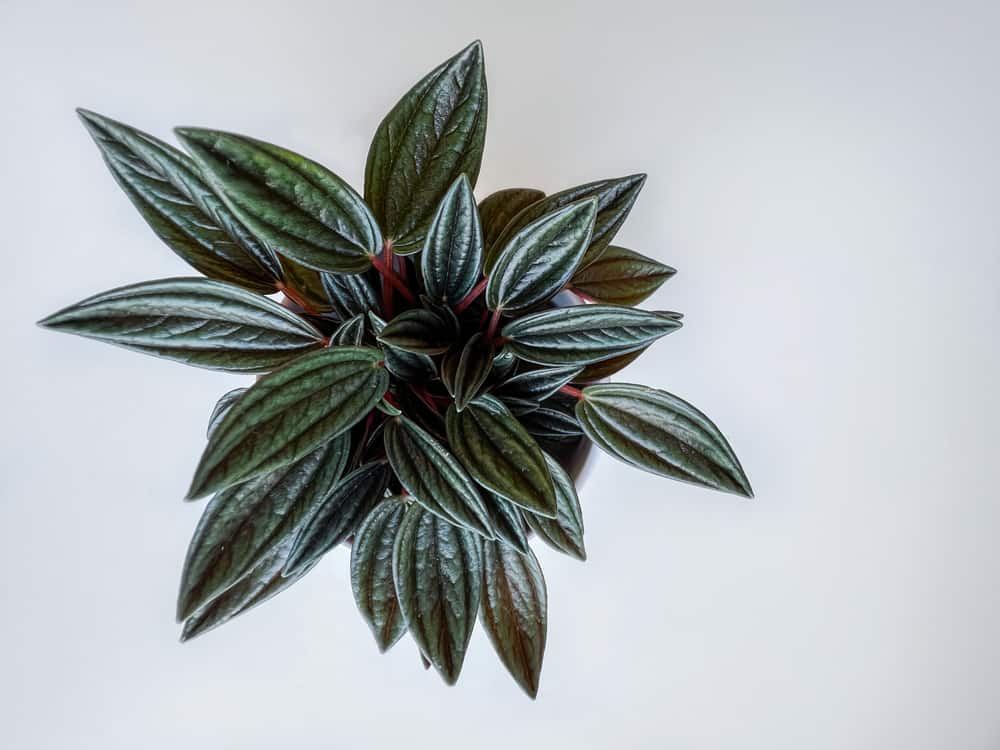
The Peperomia Rosso plant, scientifically known as Peperomia caperata ‘Rosso’, is an extravagant-looking compact plant that gives a blissful touch to any spot it lands on. At a later stage, the plant develops dark-green heart-shaped leaves arranged in a rosette pattern. If you’re looking for a small plant with a “wow” factor, this plant is definitely worth a try!
| Scientific Name | Peperomia caperata ‘Rosso’ |
| Common Name | Emerald Ripple Pepper, Radiator Plant, Peperomia Eden Rosso |
| Light | Bright, indirect light |
| Watering | Water twice or thrice a week |
| Temperature | 55° – 75°F (13°C – 24° C) |
| Hardiness Zone | USDA Hardiness Zones 11-12 |
| Humidity | >75 % |
| Soil Type | Light, airy, and well-draining soil |
| Soil pH | slightly acidic: pH 6.0 – 6.6. |
| Fertilizing | Fertilizers are generally not needed |
| Repotting | Once the plant has outgrown its current spot |
| Pruning | Once every 8-12 months since the plant grows slowly |
| Propagation | Leaf and stem cuttings |
| Toxicity | No known toxicity |
| Mature Size | Reaches only about 8 inches tall and 8 inches wide |
| Bloom Time | Early spring and summer |
What’s Unique About Peperomia Rosso?
The Peperomia ‘Eden Rosso’ is among the many remarkable varieties of peperomia. Adorned with a set of deep red and green colored foliage, the plant stands out despite its relatively small and somewhat compacted habit.
Peperomia Rosso is a mix between Peperomia marmorata and Peperomia metalica. Distinctively, the leaves of this peperomia with red underside and deep-rooted veins are attached to relatively red-toned stalks. As it matures, the elongated juvenile leaves would develop into a heart-shaped cluster.
The eden rosso plant is native to the tropic regions of South and Central America. It grows in a rosette pattern and often would not go beyond 8 inches for both height and width.
Peperomia Rosso Care
Given the tropical environment from which the plant originates, growing peperomia rosso requires a high level of humidity and an average temperature.
For beginners, Peperomia rosso plant care consists of providing the plant with bright indirect light, ample moisture, and occasional feeding here and there.
Below are tips for you on the basics of Peperomia caperata rosso care.
Light
Ideally, Peperomia rosso light requirements consist of bright, indirect light. It can also tolerate low light conditions but avoid prolonged full sun exposure as this can cause unattractive scorching to your plant.
The Peperomia caperata light needs can be easily attained by situating the plant at least a meter away from the window. But if you think they go perfect on that window sill, you can just filter the light by use of curtains or drapes.
Pro tip: To maintain its vibrance, the best lighting spots for this plant are in the early morning hours or late afternoon sunlight. In between is just too intense and can do more harm than good.
Watering
Check the watering needs of Peperomia rosso by sticking your index finger into the soil at least 2 inches deep. If the soil already feels dry, you should water the plant. The key is to water Peperomia caperata rosso thoroughly.
Drainage is an important aspect of Peperomia rosso watering. The technique is to water the plant until the water starts dripping from the container and then later allow the excess to drain out entirely. Peperomia rosso hates soggy soil as this can make them vulnerable to root rot which can affect the plant’s vigor. The ideal watering cycle is done twice or thrice a week.
Temperature
The Peperomia rosso temperature range is quite specific. The optimum ranges from 55° – 75° F (13° C – 24° C). Outside of this range may be problematic as the plant does not possess high or low-temperature tolerance. However, an average indoor temperature is usually around 68 to 75° F, so it’s not that challenging to maintain.
The temperature for Peperomia caperata rosso is attainable at the reported USDA hardiness zones of the plant, which are 11 to 12. This makes temperature less of a problem when it comes to growing Peperomia rosso indoors. When they’re outside, it’s crucial to keep them from cold extremes once the winter season arrives.
Humidity
Similar to other houseplants of tropical origin, the Peperomia rosso enjoys a humid condition. You may find it a relief that Peperomia rosso humidity requirements are adaptable to humidity levels found in most homes.
The ideal humidity for Peperomia caperata rosso is categorized as moderate, or 40 – 50 %. However, the optimum humidity level for healthy growth of the peperomia plant is at least 75 %.
Pro tip: If you feel like your home isn’t humid enough, you can occasionally mist your peperomia rosso. You may also place the plant near your other houseplants to improve air moisture or use a pebble tray.
Soil
The Peperomia rosso soil requirement is similar to other epiphytic houseplants, since the plant also has an epiphytic nature. They like loose, airy soil that can hold just enough moisture.
To attain the optimum soil mix, combine a 1:1 ratio of peatmoss and perlite. You can also use locally bought garden mix for orchids or succulent plants as soil for Peperomia caperata rosso.
Pro tip: Use a low leveled container and avoid heavy and clumpy soil which may restrict the growth of roots. The pH level for Peperomia caperata rosso substrate is slightly acidic: pH 6.0 – 6.6.
Fertilizer
Generally, most peperomia species do fine without fertilizers. So, giving Peperomia rosso fertilizer may not be as critical as compared to your other houseplants.
It is also important to note that if you used a commercial potting medium, it is more likely that it has already been mixed with a starter dose. Yet if you wish to see some more growth action, you may apply fertilizer for Peperomia caperata rosso following a balanced fertilizer ratio of 20-20-20.
Adding in some organic amendments like vermicasts or humificants may also mimic the natural substrates with which the plant usually thrives in the wild.
Potting & Repotting
Conduct Peperomia rosso repotting when the plant appeared to have overgrown its current pot. Overtime, the roots may become clumpy and may eventually cause stunted growth. Thus, repotting Peperomia caperata rosso is a vital step to prolong the life of your plant as well as maintain its vibrance.
Choose a potting container at least twice the original pot size. Use a fresh potting soil ideally made up of 50 % perlite and 50 % peat moss. It’s also best to do potting early morning or late afternoon.
Note, however, that because of the plant’s fine and tiny root system, it is also mainly grown as a dish garden plant.
Pruning
Peperomia rosso pruning is another horticultural practice to keep the plant healthy and to make it look fuller. Pruning of spent foliages also helps in prolonging the life of the plant and reduces its vulnerability to any attacking pests.
Always use a sharp and sanitized shear or pruning knife when cutting Peperomia caperata rosso. Trim from below as this is where the old leaves are and slowly make your way around the plant to cut spent leaves and those shoots that are already decaying. Just be sure not to overdo it.
Prune once or twice a year, as this is a slow-growing plant.
Propagation
Mode of Peperomia rosso propagation consists of the use of leaf or stem cuttings. These are the recommended ways for a cheaper and more efficient multiplication of the plant.
To propagate Peperomia caperata rosso from stem cuttings, select a stem with 2 or more leaves. Cut the stem at least 4-6 inches long with a sterile knife or shear. You can either let the cuttings “stand” in water first with its stem end or directly plant them in rich moist soil to encourage rooting.
Collect leaf cuttings following similar steps. Within 2-3 weeks, the propagules should have developed roots and may later be transplanted to a pot container.
Also, make sure to check out our in-depth Peperomia ferreyrae plant care guide.
Common Problems of Peperomia Rosso
Some of the Peperomia rosso problems that any plant parent may encounter are attacking insect pests which may cause stunted growth and yellowing of the leaves.
To prevent such growing problems with Peperomia caperata rosso, make sure to observe the cultural management techniques. Such includes avoiding overwatering, maintaining optimum humidity and temperature, and providing TLC!
Pests
Peperomia rosso pests and diseases rarely become an issue. As long as you provide the right growing condition such as proper temperature and humidity, the plant would remain lively. Yet over time, some pests may find their way to the plant’s delicate foliage where they may settle and proliferate.
If you notice signs of feeding over the plant’s leaves and stems, your Peperomia caperata rosso may be infested with bugs and mites. Brown and yellow lesions may appear due to fungal infection.
Other major feeding insects that can damage your plant are caterpillars, scales, and thrips. Worry not, for you can easily remove some of these insects by hand. You may also use horticultural oils like neem oil.
Diseases
Improper cultural management technique is one of the leading causes of Peperomia rosso diseases. That’s because high relative humidity influences the effectivity of both fungi and bacteria and overwatering invites soil pathogens to infect the roots. Reports indicate that around 60 – 75 % of fungi may have little activity and may be aggravated by extreme heat.
Infected leaves may develop brown spots, darkened yellow lesions, and soft rotten necrosis. If these symptoms arise, remove the affected plant part and investigate for overwatering, underwatering, or nutrient deficiency.
Also, ensure that the ambient temperature and humidity are just right, especially if you wish to have your Peperomia caperata rosso grown indoors.
Growing Problems
Other growing problems that may be encountered by most plant parents are overwatering and underwatering. Another is maintaining proper lighting and temperature.
Many growth factors could result in a sick plant. Looking out for symptom patterns will help determine the underlying cause and thus provide proper treatment. Yellowing and other forms of chlorosis, if observed in a uniform manner, may be associated with nutrient deficiency. Symptoms such as necrosis, tissue decay, and brown spots may be relative to insect and pathogen infection.
While the Peperomia rosso is considered a low-maintenance plant, it’ll still surely benefit from other measures that can prevent diseases. This includes regular pruning, proper fertilization, and watering.
Toxicity of Peperomia Rosso
Peperomia caperata rosso has no known toxicity. Thus, it’s friendly to pets and children and safe to grow indoors.
Note that even if the plant isn’t considered toxic to humans and animals, it is still not safe to ingest as this can upset the stomach and cause problems with digestion.
For Humans
Having Peperomia rosso at home has no significant threat to humans. This is undoubtingly a relief to home gardeners. The plant’s attractive foliage can liven up dull spaces and is a perfect accompaniment to other houseplants.
Yet, it is still not safe to ingest a big portion of the plant given our inability to digest high proportions of plant fiber. Some metabolites may also be present and if consumed in greater amounts may cause indigestion and bowel disruption. Small children may be prone to this so it’s always safer to place the plant on an elevated spot or in any hard-to-reach areas.
For Pets
Peperomia rosso is considered pet friendly and this is perfect if you’re both a ‘fur’ and a ‘plant parent’. Yet, it’s crucial that the plant remain undisturbed and that no part may be ingested by your pets.
Plants have secondary metabolites that are typically produced as a defense mechanism, this is particularly true with wild plants that are prone to herbivores. These compounds may still be present on a houseplant and may impose damage to animal digestion if large proportions are consumed.
Similar to the above recommendation, place your peperomia rosso plants on an elevated position such as window sill, countertops, and high corner tables.
Peperomia Rosso Appearance
You can attribute the distinct Peperomia rosso appearance to its dark green leaves with a red underside spreading around the stem. The plant has thick and succulent leaves that help the plant store water as a mechanism for drought conditions. With its relatively compact form, the plant will only grow at about 8 inches tall and 7-8 inches wide.
Foliage
The foliage of Peperomia rosso is its most distinct feature. Its thick pointed leaves have a dark green upper leaf surface and a reddish lower surface. In addition to its durability and low maintenance quality, the multicolored leaves are among the plant’s many adorable characteristics. Its succulent orientation enables it to store water enabling them to thrive under water stress conditions.
A compact houseplant, this succulent plant usually grows up to 8 inches in height. Regular pruning and cutting down of leaves will help maintain the plant’s significant petite frame. It will also make the plant look fuller and neat.
Flowering
During the blooming season, the peperomia rosso plant would also grow a lovely set of small flowers. Peperomia rosso flowering season occurs in early spring and summer. While the flowers may not be showy, they are still fascinating to look at once they take form.
Sufficient sunlight for at least 12 hours a day favors the formation of Peperomia rosso flowers. It produces both male and female flowers which usually occur in the same plant. The scentless greenish-white flowers are held together by thin elongated spikes that stand tall between leaves. Each of these spikes measures about 2-3 inches long.
Size and Growth
The size of Peperomia rosso is relatively small. The plant can only grow at about 8-10 inches tall and 7-8 inches wide, contributing to the plant’s tightly held growth habit.
The deeply corrugated leaves are measured as 1 to 1 ½ half inches long. However, this size may still vary among different varieties. The foliage’s rosette formation also contributes to the plant’s dense structure, making them suitable for hanging baskets, small containers, and as a ground specimen for home gardens and other landscape projects.
Generally, Pep rosso has a slow growth rate, thus pruning is typically done once every eight to twelve months.
Peperomia Rosso Fragrance
While the Peperomia rosso fragrance has not yet been fully distinguished, some reports indicate that some peperomia plants have a smell similar to that of the fenugreek and maple syrup. Others suggest the peperomias eject a slight herbal scent.
Meanwhile, the flowers of Peperomia caperata are considered non-fragrant. But this rarely becomes an issue since the flowers are not considered the main feature of the plant.
On this note, the smell that may come out of your Peperomia rosso may be attributed to diseases that may cause smelly decay on your plant such as Phytophthora rot, which is caused by the soilborne fungi Phytophthora palmivora.
Suggested Uses for Peperomia Rosso
Peperomia rosso is a well-established plant that is famously grown indoors because of its aesthetically pleasing set of foliages. The plant is either grown in a small pot or in hanging baskets. In man-made tropical landscapes, peperomias are used as ground cover, typically on shaded areas to provide texture.
In addition, the plant has air purifying properties which make it an excellent choice for living rooms, bathrooms, and kitchens. Most houseplants clean air by emitting high oxygen content. According to Wolverton’s Clean Air study (1989), the peperomia plant is able to reduce formaldehyde levels in an indoor space by at least 47%.
Peperomia Caperata Varieties
Peperomia caperata varieties have over 1000 species to choose from and have since then widely saturated the plant market. Some of the most common types of Peperomia caperata are: Peperomia caperata ‘Pink Lady’, Peperomia caperata ‘Frost’, Peperomia caperata ‘Variegata’
These varieties differ in their leaf patterns as well as shape and sizes. Some have distinct light-green to yellow variegations, while others have reddish to soft pink leaf margins. These attributes make peperomias a staple houseplant grown due to the high degree of availability of a wide range of foliage formations and colors.
Below are other varieties of Peperomia caperata that you may also find suitable to your needs.
Peperomia caperata ‘Pink Lady’
The Peperomia caperata ‘Pink Lady’ is highly distinguished due to the plant’s heart-shaped, pink leaves with irregular green patches. The plant needs regular watering to thrive, and it will perform well when sunlight is abundant.
Peperomia caperata ‘Variegata’
The Peperomia caperata ‘Variegata’ flaunts dainty heart-shaped leaves with significant variegations of light green to yellow or as a mixed planter. It has a pleasant mounding habit that makes it highly suitable for small pot containers.
Peperomia caperata ‘Frost’
The Peperomia caperata ‘Frost’ exhibits an exceptionally beautiful set of rippled green leaves covered with a texture similar to a frost. It has dark green veins and grows only about 6 to 12 inches tall.
Peperomia caperata ‘Abricos’
The Peperomia caperata ‘Abricos’ has an interesting take on its foliage for it features a set of deep red leaves that can go as dark as black cherry. The pink-veined leaves are attached to deep red petioles, contributing to the rarity of this specimen.
Peperomia caperata ‘Schumi Red’
The leaves of the Peperomia caperata ‘Schumi Red’, have rippled and corrugated textures with reddish-purple color and it’s also one of that peperomia with red undersides having a sparkly appearance.
FAQ
What is Peperomia rosso?
The Peperomia caperata rosso, also known as Emerald ripple peperomia or Radiator plant, is a tropical species belonging to the Piperaceae family. Origination from the tropical regions of South America.
How to identify Peperomia rosso?
The Peperomia rosso differs from other varieties due to its dark green foliage with reddish undersides which forms a rosette habit. The plant grows only about 8 inches tall and 7-8 inches wide.
How to care for Peperomia rosso?
The Peperomia rosso thrives under bright indirect light, with a relative humidity of at least 75%. Avoid overwatering and maintain an ambient temperature of 55° – 75° degrees Fahrenheit.
How to grow Peperomia rosso outdoors?
Peperomia rosso may be grown outdoors year-round provided that the plant is not exposed to direct sunlight. Water thoroughly and prune the plant as needed.
How fast does Peperomia rosso grow?
Propagating the Peperomia rosso plant in spring proves to be faster. Use leaf or stem cuttings as these tend to develop roots within 2-3 weeks.
How tall does Peperomia rosso grow?
The Peperomia rosso is a compact and small-sized perennial that grows only about 8-9 inches tall. Often grown indoors as a foliage plant and a groundcover in an outdoor setting.
How to make Peperomia rosso grow faster?
Peperomia rosso is generally a slow-growing plant. However, if you wish to see some drastic change you may opt to apply an all-purpose fertilizer with a balanced ratio.
How to stake Peperomia rosso?
Since the Peperomia rosso is relatively small and has a compact nature. Staking it won’t be necessary. Regular pruning helps in maintaining the plant’s form.
How to pot Peperomia rosso?
When potting Peperomia rosso, be sure to use fresh potting media. Fill the pot with soil halfway and gently place the plant at the center. Pour the remaining soil and water thoroughly.
How to revive Peperomia rosso?
Ensure that the plant is regularly watered, and if there’s an infestation present, address this immediately by pruning and by use of natural insecticides or fungicides.
Why is my Peperomia rosso dying?
The plant’s lifeless appearance may be attributed to a lot of factors, such as overwatering, low humidity levels, pathogen infection, and nutrient deficiency. Check the symptoms first.
Why is my Peperomia rosso drooping?
Drooping leaves may be the first signs of infection or water stress. Make sure the plant is receiving an ample amount of water and bright light.
How cold can Peperomia rosso tolerate?
This tropical plant prefers a temperature range between 60-80°F (16 to 27°C), it cannot tolerate lower than 50°F (10°C) so it’s safer to keep them from such weather extremes during winter.
How to get rid of pests on Peperomia rosso?
Remove and discard the infected leaves using a sterile knife or shears. Spray the underside with horticultural oils such as neem oil. Prevent further infestation by keeping the leaves dry.
Is Peperomia rosso toxic to cats?
No. The Peperomia rosso has no known toxicity to cats. However, some metabolites may be produced within the plants so they should not be ingested.
Is Peperomia rosso toxic to dogs?
No. The Peperomia rosso has no known toxicity to dogs. However, some metabolites may be produced within the plants that can upset the animal’s stomach.
Is Peperomia rosso toxic to children?
No. The Peperomia rosso is not considered toxic to children. However, the plant may produce some metabolites which can cause indigestion and disrupted bowel movement, if ingested.
Is Peperomia rosso toxic to humans?
No. The Peperomia rosso is not considered toxic to humans in general. However, the plant may produce some metabolites which can cause indigestion if taken in large amounts.
Does Peperomia rosso have a scent?
Some reports indicate that the Peperomia rosso has some distinct herbal scent that is mild and often goes unnoticed, but its flowers are considered non-fragrant.

